|
Big factories,
low pay
The photo below shows a large textile mill in Massachusetts. It had machines for weaving cotton and printing it with a color pattern. Pay at factories like this one around 1900 came to about $9.00 a week. (That would be roughly equal, in what it could buy, to about $250 a week in today's money.) |
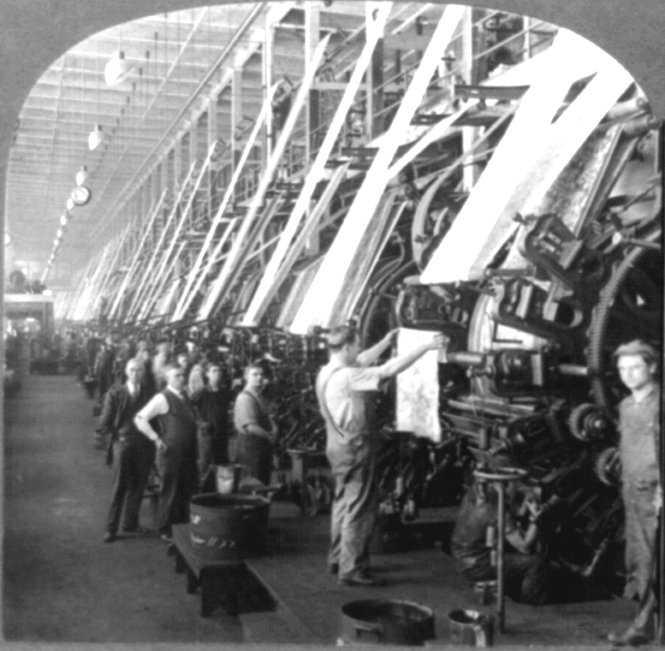
|
Dangerous
work in mines and factories
Coal mining was especially dangerous work in those days. This photo shows an injured man being helped in a Pennsylvania coal mine around 1900. Hundreds of miners died each year in cave-ins and other mine accidents. |
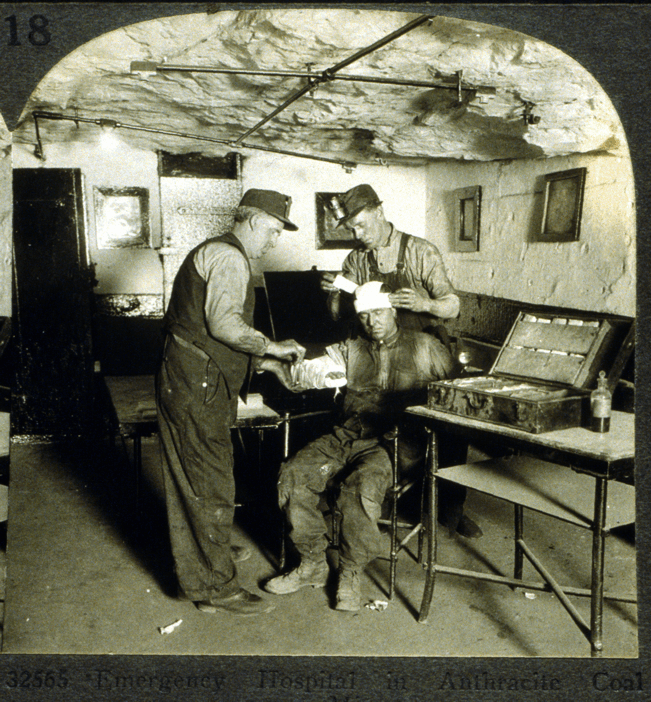
|
Underground
all day at age 13
The photo below shows the inside of a coal mine in Pennsylvania. The boy on the left in the photo is 13 years old. His job was to open and close a door between sections of the mine whenever a crew pulled a loaded cart of coal through that area. |
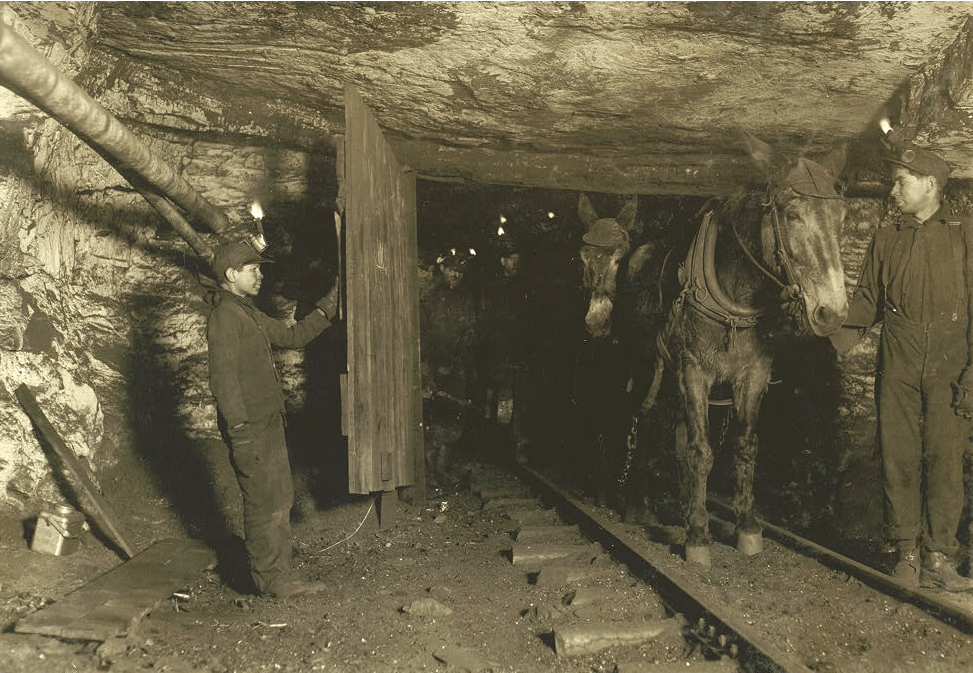
|
Unsafe
factories - girls at work
The photo below shows children working alongside an adult woman in the textile factory in North Carolina in 1908. Sometimes children (and adults) lost fingers in the fast-moving machinery. |
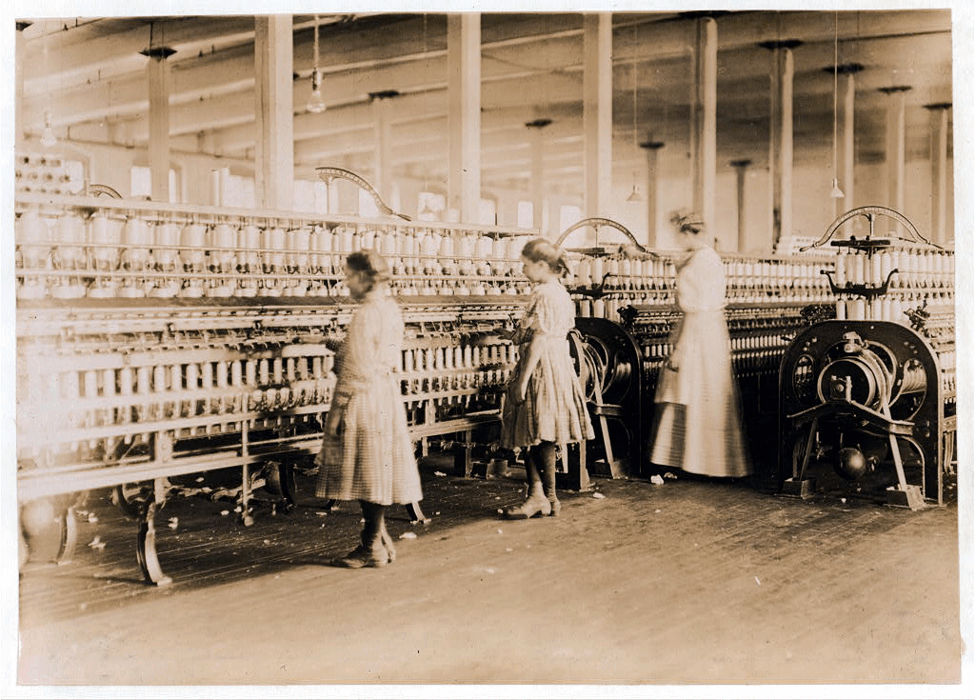
|
Unsafe
factories - boys at work
The photo below shows boys working in a textile factory in Georgia in 1908. Notice that the belt that drives the machine has no metal cover to protect the workers from getting a hand caught and injured. |
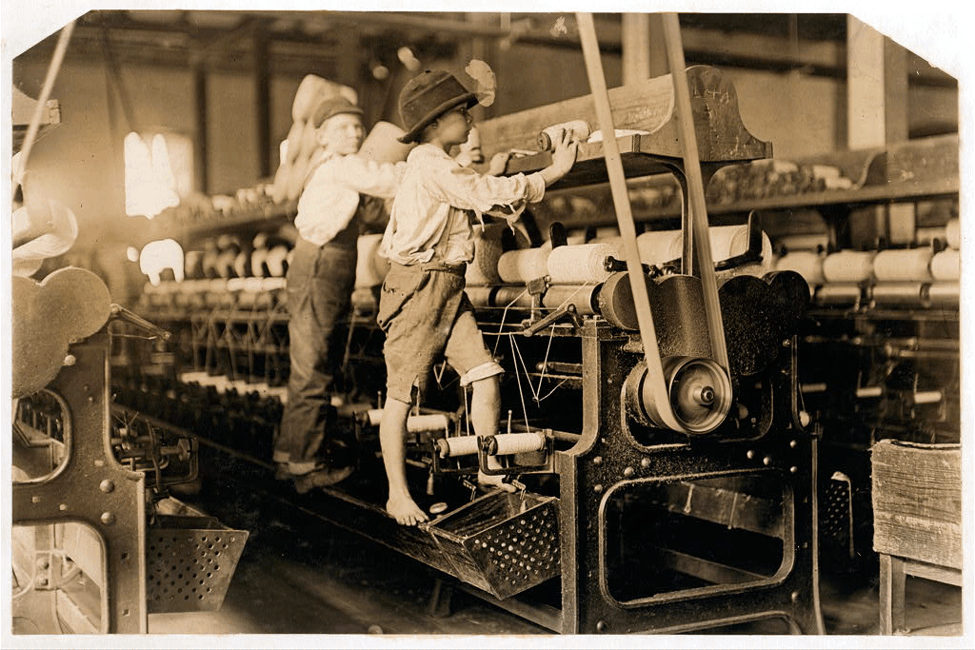
|
Public
concern grows
The work conditions, child labor, and pay in American industry began drawing more public concern in the 1880s and 1890s. These were all big issues for many social reformers who were part of what became known as the Progressive movement in the 1890s and early 1900s. A push began to get new laws passed to protect workers' rights, but it was several decades before these efforts were really successful. The political cartoon below is from Puck magazine in 1883. The cartoon is critical of the large gap in wealth between the very rich and the average worker. Wealthy business owners are shown sitting in luxury as workers are bent over and working for low pay. Business owners, however, argued that they earned their wealth by being good managers and investors in new industries. They said that they deserved their wealth because they took the financial risks to create the businesses that provided jobs for America's workers. |
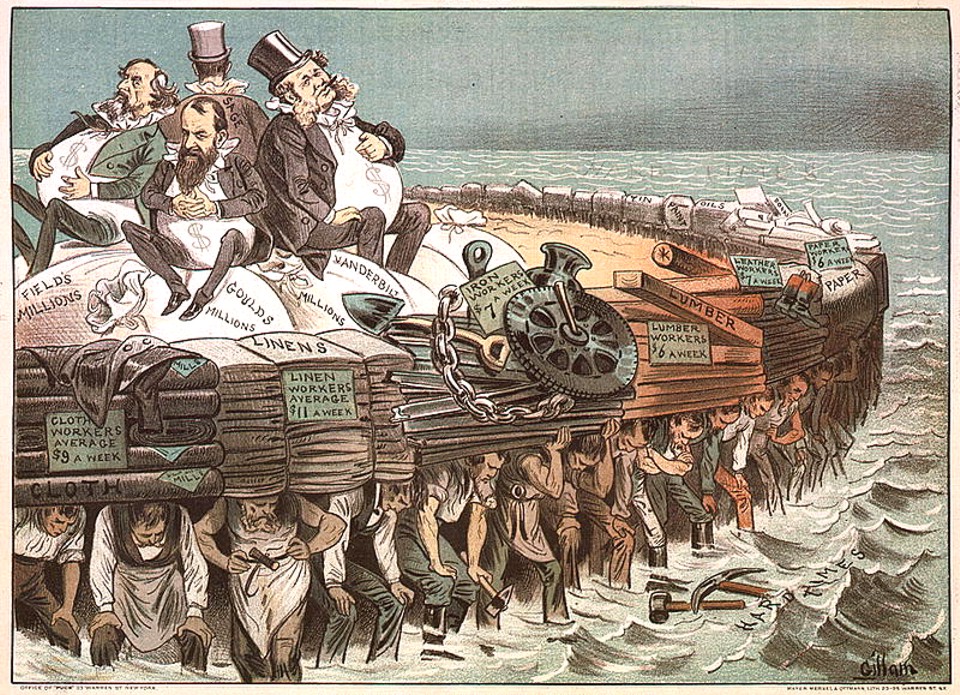
Photographs are from the Library of Congress. The child labor photos
were taken by Lewis Hine, and are part of the Library of Congress collection.
Wage and money value calculations are from the Bureau of Labor
Statistics online CPI calculator, using 1913 as the base year,
and 2017 as the comparison year.
Some images have been edited or resized for this page.
|
Copyright Notice
Copyright 2009, 2020 by David Burns. All rights reserved. |